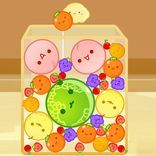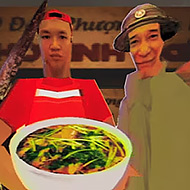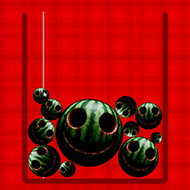CloverPit is a slow-burning survival strategy experience where your main goal is simple—grow life in a place designed to destroy it. At first, you start with a barren pit of dirt, a few seeds, and faint rays of sunlight. Yet, beneath the surface lies a living system that reacts, evolves, and occasionally rebels against you. The deeper you dig and the more you cultivate, the more alive the pit becomes. It remembers every drop of water, every decision, and every failure. CloverPit transforms gardening into something psychological—a challenge of balance, adaptation, and the fine line between creation and collapse.
Root, Grow, Survive
The core gameplay of CloverPit revolves around nurturing a self-sustaining ecosystem. The pit’s soil changes over time, responding to how you handle its nutrients, water, and temperature. Your plants don’t just grow; they adapt to survive under your guidance—or despite it. As the ecosystem evolves, new layers of complexity unfold. Roots compete for space, fungi spread across the walls, and unexpected species start appearing. You’re not just planting seeds—you’re building a fragile network of life that has to fight for every breath.
- Dynamic Soil Mechanics: Nutrient distribution and moisture evolve with every action.
- Reactive Flora: Clovers mutate based on your care, developing survival traits or aggressive growth patterns.
- Biotic Challenges: Fungi, insects, and underground organisms compete for control.
- Environmental Change: Each day brings new weather, altering temperature and moisture levels.
The Pit That Learns
CloverPit distinguishes itself through its responsive world. The pit doesn’t reset when you fail—it remembers. Each attempt imprints data into the environment, leading to new mutations and soil structures in later playthroughs. The result is an organic learning loop where the game adapts alongside the player. Over time, the pit becomes something more than terrain—it becomes a character. It learns your habits, predicts your strategies, and occasionally pushes back against them. This unpredictable behavior ensures that no two growth cycles ever feel alike.
- Persistent Memory System: The environment evolves with every session.
- Adaptive Difficulty: Conditions react to your previous methods of success.
- Underground Lore: Clues within the soil hint at a deeper meaning behind the pit.
- Emergent Gameplay: Interacting systems generate unpredictable outcomes.
The Beauty of Balance
Unlike traditional survival games, CloverPit rewards patience instead of aggression. There’s no single “right” way to win—only cycles of balance, decay, and rebirth. Each clover you grow affects the pit’s chemistry, slowly changing how it behaves. Some players may seek endless expansion, while others prefer small, self-contained harmony. In either case, growth always comes with cost. The ecosystem will always find equilibrium, even if that means undoing your work. The result is an experience both meditative and challenging, where progress is measured in how well you understand the rhythm of life itself.
- Nonlinear Progression: Every decision creates new possibilities and threats.
- Atmospheric Feedback: Sound, light, and movement respond to your progress.
- Multiple Outcomes: Survival, collapse, or symbiosis—all determined by balance.
- Endless Replayability: Procedural mechanics ensure each attempt is unique.
CloverPit is not a game of conquest—it’s a game of coexistence. Growth and decay exist in constant dialogue, teaching that sometimes the most powerful act is restraint. The pit doesn’t need you to survive—but if you listen closely, you may find that it’s willing to grow with you.













 Fullscreen
Fullscreen






